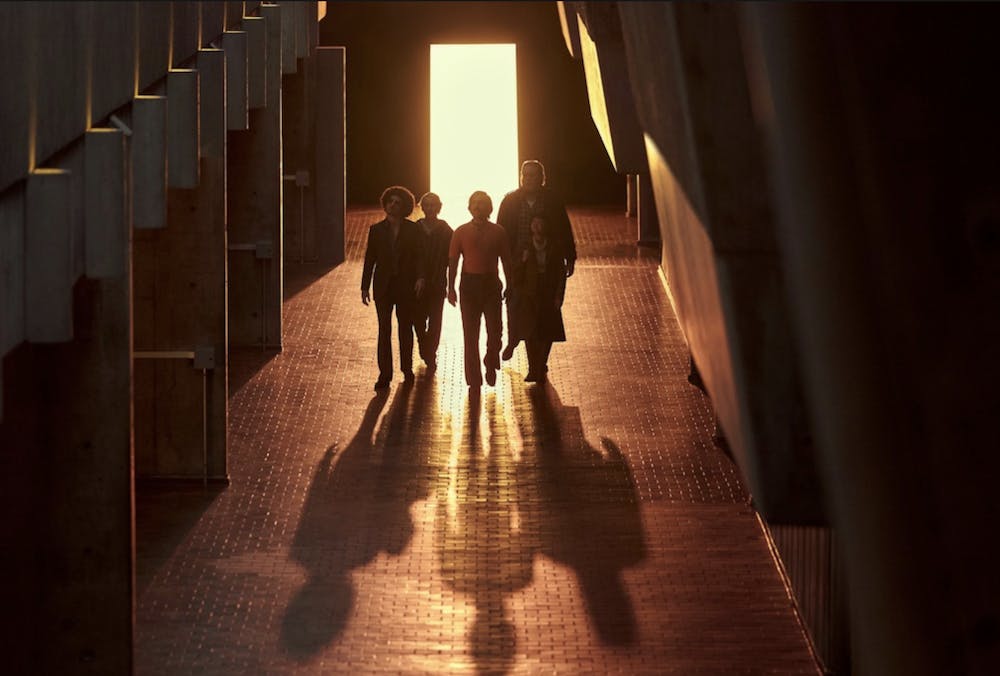Netflix’s latest big-budget horror series, the star-studded anthology “Guillermo del Toro’s Cabinet of Curiosities,” draws influence from various horror sub-genres, with episodes ranging from ghost stories to body horror and Lovecraftian eldritch terror. Composed of eight episodes each of which features an ensemble cast and a big-name director, the series is immediately appealing for horror and non-horror fans alike. Though uneven at times, “Guillermo del Toro’s Cabinet of Curiosities” offers an entertaining and enjoyable collection of hour-long horror stories with something for viewers of all tastes.
As one of the preeminent names in contemporary horror — and in Hollywood — Del Toro’s involvement immediately lends the series some credibility. After winning the 2017 Academy Award for Best Director and Best Picture for “The Shape of Water” and having “Nightmare Alley” nominated for Best Picture last year, Del Toro’s reputation is unquestioned. Evoking “The Twilight Zone” and other seminal anthologies, Del Toro introduces each episode himself, drawing his tales from the eponymous “Cabinet of Curiosities.” Del Toro was involved in the writing of two episodes, but otherwise serves as the steward of the series, allowing each individual director’s distinctive vision to shine through.
One major commonality between episodes — and one of the series’s biggest draws — is the incredibly high production value. Cinematography, sound, costume and set design are excellent across all eight episodes. While episodes struggle with uneven storytelling and pacing and sometimes fall into predictable horror tropes, production value never dips throughout.
The crown jewel of the series is its eighth and final episode, “The Murmuring,” directed by Jennifer Kent of “The Babadook” and co-written by Del Toro himself. “The Murmuring” tells the story of Nancy (Essie Davis) and Edgar Bradley (Andrew Lincoln), a pair of married anthropologists who move into an old house on a secluded island to observe the island’s population of dunlins, a type of bird. But the couple’s marriage is strained in the aftermath of a family tragedy, and as Nancy begins to discover the house’s dark history, these strains are made even more clear. Though “The Murmuring” has moments of tension and offers a few well-executed scares, the vast majority of the episode focuses on grief and how the Bradleys process loss, allowing Lincoln and Davis to display their acting abilities. The poignant storytelling and strong acting, combined with Kent’s all-around excellent directing, make “The Murmuring” the highlight of the series.
In terms of sheer terror, no other episode matches the gruesome dread of “The Autopsy.” The episode focuses on Dr. Carl Winters (F. Murray Abraham), a sick, aging coroner investigating the aftermath of a mysterious mine shaft collapse seemingly caused by an explosion. As Winters discovers the sinister truth of what happened, the episode shifts into pure, Cronenbergian body horror. Abraham excels in the lead role of an expertly shot and staged episode, with a strong performance of Luke Roberts as the episode’s mysterious antagonist adding to the unsettling tone. Punctuated by a satisfyingly grotesque ending, “The Autopsy” explores the limits of the human body in a way that makes it one of the standouts of the series.
The episode “Pickman’s Model” perhaps best showcases the series’s highs and lows. Adapted from a short story by H.P. Lovecraft, the episode tells the story of young artist Thurber (Ben Barnes) and his encounters with the haunting paintings of fellow artist Richard Pickman (Crispin Glover). The predictable episode is filled with clearly choreographed jumpscares that are unoriginal and trite but still effective enough to make one of the series’s most frightening entries. Glover’s manic, wild-eyed portrayal of Pickman is a highlight of the series, but “Pickman’s Model” is a shakier story.
Other episodes found distinct ways to shine despite sometimes lackluster pacing and storytelling.
“The Viewing” is an impressive technical showcase with moments of compelling dialogue, but its pacing feels too slow overall. Directed by Panos Cosmatos, “The Viewing” has a lot in common with Cosmatos’s 2018 film “Mandy,” a fluorescent, stylized revenge tale with a psychedelic feel. “The Viewing,” too, is a sensory experience above all else, marked by yellow lights that cast the entire episode in an almost-golden techno glow as synthetic music plays in the background. But this impressively distinctive direction struggles to hold up when more than half the episode lacks meaningful action.
“The Outside” relies on its tonal eccentricities to be effective. Comedian Kate Micucci is excellent as Stacy Chapman, a social outcast who uses a mysterious lotion to transform herself in order to be accepted by her coworkers and peers. As the transformation begins to take a strange turn, Micucci’s consistently eccentric portrayal of Stacy maintains the episode’s comedic tone and turns instances of brutal violence into grim gags.
The first episode of the series, “Lot 36,” is the most unremarkable. The episode tells the story of Nick Appleton (Tim Blake Nelson), a deeply unlikable man who gets drawn into a brutal yet generic demonic ritual. Nelson effectively portrays Appleton as the racist loner that he is, and his character’s unremarkable arc makes it impossible to root for — or even care about — him at all. Despite Del Toro’s direct writing involvement, “Lot 36” is unable to overcome its bland main character and cookie-cutter plot.
“Guillermo del Toro’s Cabinet of Curiosities” is an accessible, well-made horror anthology that, despite its occasional low moments, has numerous strokes of brilliance. Even as Halloween season comes to an end, viewers are sure to enjoy all the thrills and chills of this quality horror television show throughout the year.

Peter Swope was the senior editor of digital engagement for The Brown Daily Herald's 133rd Editorial Board. He previously served as a Sports section editor and has also written stories for University News. Peter is a senior from New Jersey studying history.





